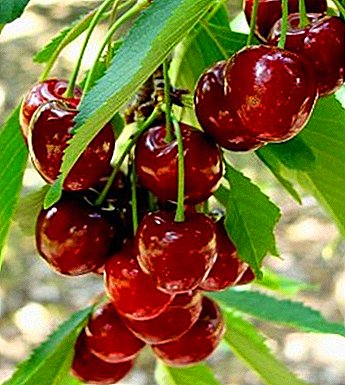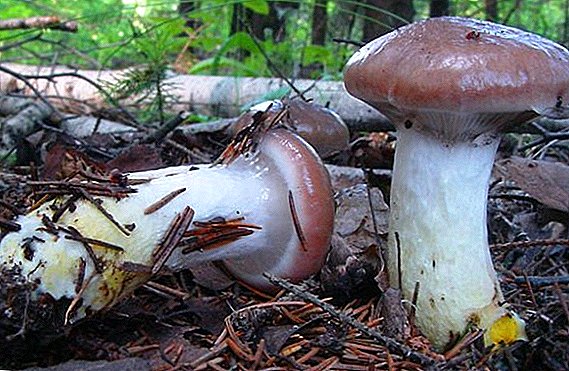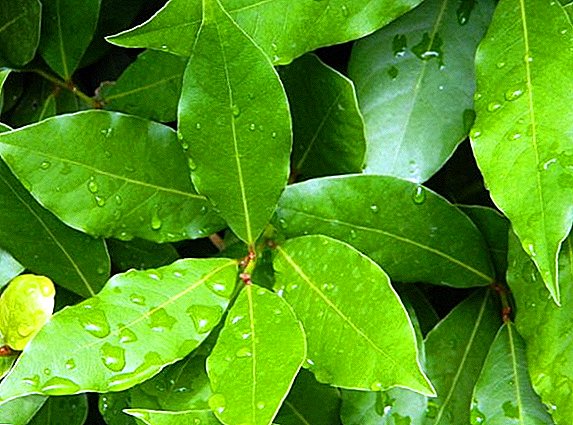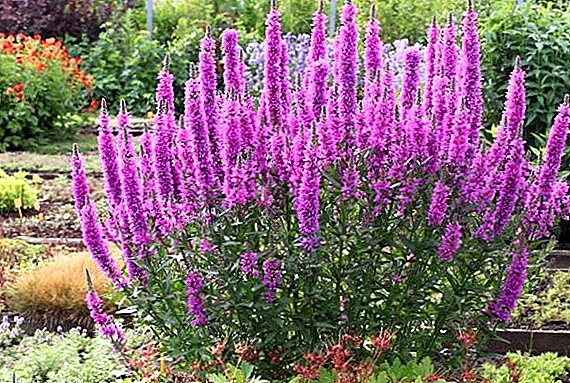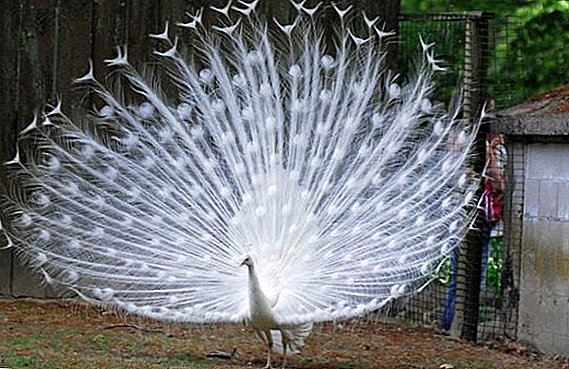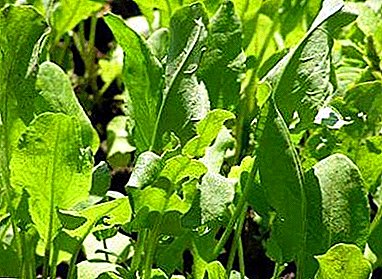
What do we know about sorrel? This is an edible plant that grows in almost every gardener in the garden. Sorrel - a storehouse of vitamins and minerals, as it contains a large number of useful components necessary for human health.
Sorrel is an unpretentious plant, but in order for it to quickly grow and grow, you need to follow certain conditions.
In this article we will consider all the subtleties in the cultivation of this crop, as well as how much it grows, after what time it will rise, when to wait for the harvest.
How many days after planting in open ground?
The first shoots of sorrel in the open field can be seen in two weeks.
What determines the timing of the appearance of the first leaves?
Each sorrel variety is individual, and seed ripening period may vary from 30 to 55 days. Planting time also affects the duration of ripening, the best period for disembarkation is spring.
After planting seeds in the spring, you can enjoy the harvest in the same year. Another important condition for the cultivation of sorrel, which determines the ripening period and the quality of the crop - is the soil.
The soil should be wet, but in moderation. It should be cleared of extraneous grass, and well fertilized with humus. The best soil is sandy loam and loam.
What should healthy sprouts look like?
Sorrel leaves should be small and young., no damage, no stains. Uniform color and bright green.
A photo
See how the plant looks in the photo when it comes up after sowing:



Which varieties hatch quickly?
When we buy seeds, we want to know how fast they grow, or vice versa. Now we will consider the most popular types of sorrel and their maturation:
- Large leaves - 30-35 days.
- Emerald King - 30-40 days.
- Champion - 40 days.
- Spinach - 40 days.
- Broadleaf - 40-45 days.
- Malachite - 40-45 days.
- Odessa - 40-45 days.
- Maikop - 40-45 days.
- Sanguine - 40-45 days.
Shoot what kind of wait a long time?
- Nikolsky - 45-50 days.
- Bloody Mary - 45-50 days.
- Emerald snow - 46-52 days.
- Bellevi - 48-52 days.
Is it possible to speed up time and how to do it?
If you want to accelerate growth, then you can cover it with a greenhouse film, and the seeds will not take long to wait, after about 7 days they will start to peck.
reference. A good microclimate for sorrel creates agrofibre, and the seeds will emerge in a week.
Sprouting seeds: step by step instructions
- It is necessary to take a piece of gauze and moisten it in warm water.
- Put the seeds in gauze and cover with the second part of the gauze.
- Hide the seeds in a dark warm place.
- After two days, the seeds begin to germinate.
- After the germination procedure, the seeds can be prepared for planting in the ground.
Fertilization
Fertilizing sorrel is necessary every year at the beginning of spring, and every time after cutting. The soil is fed with mineral fertilizers in the amount of 10-25 g, a solution of mullein (1: 6), a solution of bird droppings (1:10). The amount of the composition is taken on 1 sq.m.
Departure after landing
 A very important condition for good yield is regular watering. The soil should always be a little wet. If the soil is dry, then the sorrel will start blooming earlier, but the taste will be very different.
A very important condition for good yield is regular watering. The soil should always be a little wet. If the soil is dry, then the sorrel will start blooming earlier, but the taste will be very different.
In the first year after planting sorrel in open ground, it is necessary to periodically loosen and remove weeds. The culture also needs regular feeding.
The first harvest of sorrel is cut a month or a month and a half before the onset of cold weather and soil freezing, mulch the soil, adding compost and humus between rows.
Does the time of the appearance of leaves when landing at home?
Growing crops at home is practically the same as growing on open ground. Sorrel also requires regular watering, loosening the soil, removing weeds and fertilizing fertilizers.
- It is necessary to water only with warm water, cold water from the tap will not work.
- In summer, when it gets hot outside, you need to carefully monitor the condition of the soil and water more often. And in winter, on the contrary, water a little less.
- About once a week before watering, the land should be loosened, if necessary, remove all weeds.
- Feed the land in pots can be mineral fertilizers, such as superphosphate, potassium chloride and urea.
- Blackening sorrel tolerates well, so the north and north-west side of the apartment will be suitable for its cultivation.
- For normal growth and development, the temperature in the apartment should be from 5 to 20 degrees.
Why not hatch and what to do in this case?
There may be several reasons why the seeds did not grow..
- It could be seeds lost their germination due to prolonged or improper storage.
- Seeds have not received regular and sufficient watering.
- Seeds are planted very deep in the ground, because of this they can not "hatch". When the soil is loose and following watering, the seeds will go even deeper, and it will no longer be possible to hope for sorrel shoots. Sorrel seeds are of small size, so the maximum depth should be no more than 1 cm.
How many days do I have to wait before doing something?
Usually shoots appear 8-14 days after planting. If after two weeks the seeds do not sprout, you need to think about whether you planted the seeds in the ground. And how to care for him during this time.
Overdue seeds
 Not always expired seeds mean unsuitable for planting, if they were stored in a room with a certain level of humidity and temperature, the germination of crops is much more than what is written on the package.
Not always expired seeds mean unsuitable for planting, if they were stored in a room with a certain level of humidity and temperature, the germination of crops is much more than what is written on the package.
Sorrel germination from 2 to 3 years. But before planting the seeds, it is necessary to examine them carefully, if they are dried or they have mold, such seeds should be thrown away immediately.
Seed germination can be determined by the following test. Several seeds are taken from the lot. For them, a saucer is prepared with a folded, moistened napkin, then the seeds are placed on this napkin and covered with it. The saucer is sealed with film and placed in a warm place, occasionally sprinkling a napkin to keep it moist.
Improper care or lack thereof
Improper care for sorrel can include both excessive watering and lack of it.
Improper care of the ground, i.e. the lack of regular loosening, weeding and feeding, can have a negative impact on the quality and quantity of the crop.
Various pests of sorrel spoil the young leaves and make them unfit for consumption, and if you do not fight them, then you are guaranteed a lack of harvest.
Wrong ground
To the wrong ground for sowing sorrel can be attributed to the presence of weeds, too dry or too wet soil, too much or not enough fertilizer, or even their absence.
Diseases and pests
Diseases of sorrel:
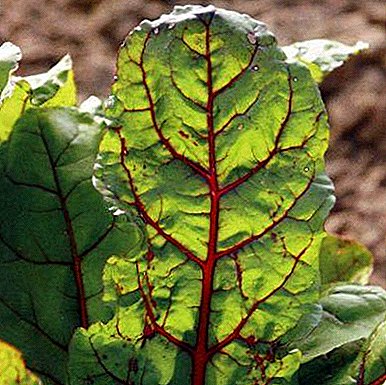 Rust - A very common disease. A sign of disease is a semblance of yellowish blisters on the leaves. Over time, the bubbles burst and spores spill out of them.
Rust - A very common disease. A sign of disease is a semblance of yellowish blisters on the leaves. Over time, the bubbles burst and spores spill out of them.To fight rust, it is imperative to destroy the remains of leaves in the beds, and carry out the digging of the soil with the addition of fertilizers in the autumn.
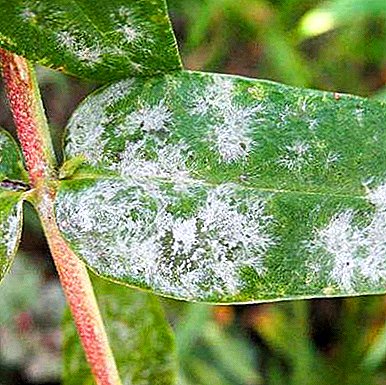 Downy mildew - The plant usually suffers from this disease in the first year of life. The affected leaves become brittle, wrinkled, the edges curl down. The disease actively manifests itself in wet rainy weather.
Downy mildew - The plant usually suffers from this disease in the first year of life. The affected leaves become brittle, wrinkled, the edges curl down. The disease actively manifests itself in wet rainy weather.In order to fight this disease, it is necessary to remove weeds and sick leaves from the ground in a timely manner.
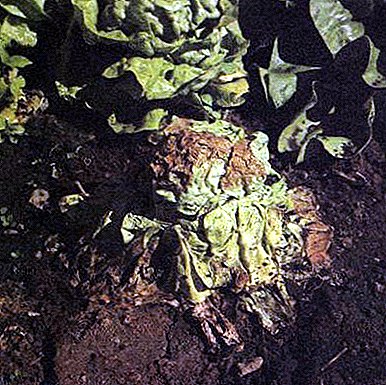 Gray rot - the first sign is burgundy spots on the leaves. Then they become lethargic, watery, and then rot. The appearance is associated with a thick planting of sorrel.
Gray rot - the first sign is burgundy spots on the leaves. Then they become lethargic, watery, and then rot. The appearance is associated with a thick planting of sorrel.To fight, you need to transplant sorrel where there is more sunlight, more air - this applies to growing at home.
Sorrel pests:
 Aphid - this pest can create a great threat to the culture, because it completely affects it. It is very easy to detect aphids, just flip the leaves. Aphids reproduce very quickly, it feeds on leaf sap.
Aphid - this pest can create a great threat to the culture, because it completely affects it. It is very easy to detect aphids, just flip the leaves. Aphids reproduce very quickly, it feeds on leaf sap.The leaves turn yellow, fade, the root of the sorrel weakens and the plant dies. An effective way to combat aphids, are infusions prepared from garlic, burdock, ash mixed with soap.
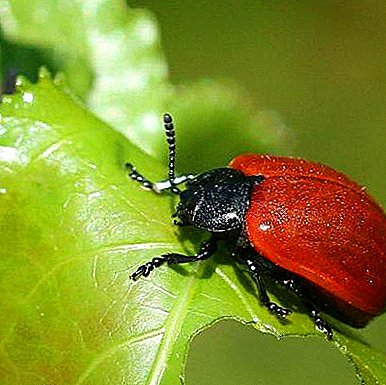 Leaf beetle. The first sign is small holes all over the leaf surface. The beetle eats the leaves, and on the back side leaves the egg clutches from which the beetles grow.
Leaf beetle. The first sign is small holes all over the leaf surface. The beetle eats the leaves, and on the back side leaves the egg clutches from which the beetles grow.The main salvation from the beetle is the Feverfruit plant - a perennial plant of the Astrov family. It can be planted on the site, and you can make the infusion and spray.
 Sorrel sawfly - These are small green caterpillars actively eating oxalic leaves.
Sorrel sawfly - These are small green caterpillars actively eating oxalic leaves.In order to prevent the occurrence of pests, you need to carefully monitor the absence of weeds in the beds. Spray the leaves can be infusion of chamomile with soap.
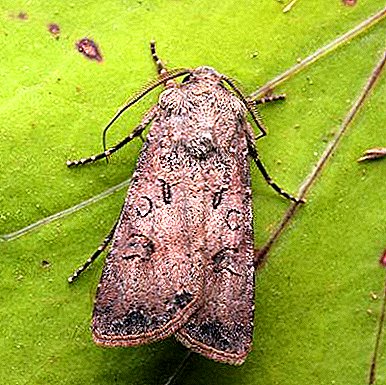 Winter scoop - It is a dark-winged butterfly, which appears at the end of spring. It feeds on leaves, and closer to autumn it moves to the base.
Winter scoop - It is a dark-winged butterfly, which appears at the end of spring. It feeds on leaves, and closer to autumn it moves to the base.For the purposes of prophylaxis, one should dig up the soil at the site in autumn, after harvesting.
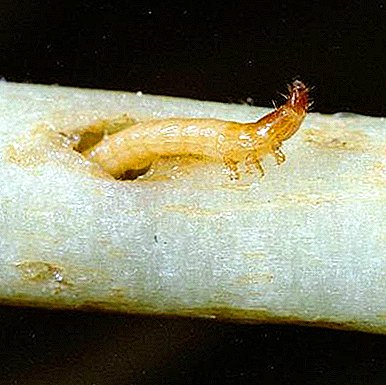 Wireworm - A tiny plant that loves to eat leaves. If the soil dries out, it goes deep into the ground and eats the roots.
Wireworm - A tiny plant that loves to eat leaves. If the soil dries out, it goes deep into the ground and eats the roots.To avoid the emergence of wireworms, you need to regularly remove weeds, dig up the soil after harvest, do not grow a crop for too long in one place.
We have dismantled the most basic points for planting, growing, caring for sorrel. It is necessary to follow simple conditions, take care of the soil, loosen and fertilize the soil, protect from diseases and pests. And then sorrel, each season will grow, bloom and smell.


 Rust - A very common disease. A sign of disease is a semblance of yellowish blisters on the leaves. Over time, the bubbles burst and spores spill out of them.
Rust - A very common disease. A sign of disease is a semblance of yellowish blisters on the leaves. Over time, the bubbles burst and spores spill out of them. Downy mildew - The plant usually suffers from this disease in the first year of life. The affected leaves become brittle, wrinkled, the edges curl down. The disease actively manifests itself in wet rainy weather.
Downy mildew - The plant usually suffers from this disease in the first year of life. The affected leaves become brittle, wrinkled, the edges curl down. The disease actively manifests itself in wet rainy weather. Gray rot - the first sign is burgundy spots on the leaves. Then they become lethargic, watery, and then rot. The appearance is associated with a thick planting of sorrel.
Gray rot - the first sign is burgundy spots on the leaves. Then they become lethargic, watery, and then rot. The appearance is associated with a thick planting of sorrel. Aphid - this pest can create a great threat to the culture, because it completely affects it. It is very easy to detect aphids, just flip the leaves. Aphids reproduce very quickly, it feeds on leaf sap.
Aphid - this pest can create a great threat to the culture, because it completely affects it. It is very easy to detect aphids, just flip the leaves. Aphids reproduce very quickly, it feeds on leaf sap. Leaf beetle. The first sign is small holes all over the leaf surface. The beetle eats the leaves, and on the back side leaves the egg clutches from which the beetles grow.
Leaf beetle. The first sign is small holes all over the leaf surface. The beetle eats the leaves, and on the back side leaves the egg clutches from which the beetles grow. Sorrel sawfly - These are small green caterpillars actively eating oxalic leaves.
Sorrel sawfly - These are small green caterpillars actively eating oxalic leaves. Winter scoop - It is a dark-winged butterfly, which appears at the end of spring. It feeds on leaves, and closer to autumn it moves to the base.
Winter scoop - It is a dark-winged butterfly, which appears at the end of spring. It feeds on leaves, and closer to autumn it moves to the base. Wireworm - A tiny plant that loves to eat leaves. If the soil dries out, it goes deep into the ground and eats the roots.
Wireworm - A tiny plant that loves to eat leaves. If the soil dries out, it goes deep into the ground and eats the roots.
